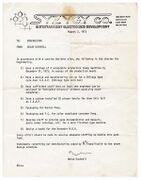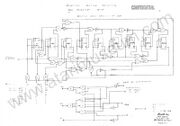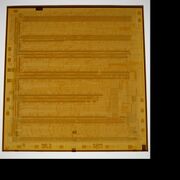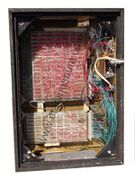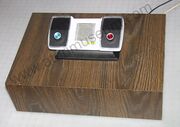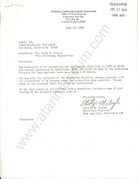Pong (1975): Difference between revisions
m (Small changes) |
MorticianBot (talk | contribs) m (Bot: Changing template: Infobox) |
||
| Line 1: | Line 1: | ||
{{ | {{InfoboxGame | ||
|title = Pong | |title = Pong | ||
|image = HomePongLabel01.jpg | |image = HomePongLabel01.jpg | ||
| Line 5: | Line 5: | ||
|publisher = Atari Inc / Sears | |publisher = Atari Inc / Sears | ||
|date = November 1975 | |date = November 1975 | ||
|mobygames = https://www.mobygames.com/game/dedicated-console/pong____ | |mobygames = https://www.mobygames.com/game/dedicated-console/pong____}} | ||
}} | |||
''Pong'' was a console released in 1975 based on Atari Inc's 1972 arcade release of the same name. Principally engineered by MOS Sorcery, the console was the first single-circuit home video game targeted at consumers as well as the first in color. Atari manufactured the system with assistance from Sears Roebuck & Co, who also marketed the game as the ''Tele-Games Pong'' exclusively within their Sears branded stores. | ''Pong'' was a console released in 1975 based on Atari Inc's 1972 arcade release of the same name. Principally engineered by MOS Sorcery, the console was the first single-circuit home video game targeted at consumers as well as the first in color. Atari manufactured the system with assistance from Sears Roebuck & Co, who also marketed the game as the ''Tele-Games Pong'' exclusively within their Sears branded stores. | ||
Latest revision as of 15:31, 5 September 2024
Pong was a console released in 1975 based on Atari Inc's 1972 arcade release of the same name. Principally engineered by MOS Sorcery, the console was the first single-circuit home video game targeted at consumers as well as the first in color. Atari manufactured the system with assistance from Sears Roebuck & Co, who also marketed the game as the Tele-Games Pong exclusively within their Sears branded stores.
The Magnavox Odyssey had helped inspire the creation of Pong, and in the third quarter of 1973 Nolan Bushnell began to put out proposals that Atari enter the home market. At the time they did not have the capital to finance such a move so it was not pursued. Only in 1974 did the idea pick up again under the engineer Harold Lee who had left the company and established an independent firm called MOS Sorcery. Lee was responsible for the chip's main engineering, Bob Brown would be responsible for the test program, and Al Alcorn would serve as the technician and debugger for the initial design.'
The main circuitry of the Pong home unit was designed using an Applicon computer-aided design system before being diagrammed and wire-wrapped. After securing a manufacturer for the chip, Atari would find a retail partner in Sears, Roebuck & Co to release the system for the Holiday season of 1975. When the system was released, it generated the most public excitement for home video games that had yet existed, despite Magnavox's presence in the market that year as well. The home version of Pong was deemed a success and would kickstart a flurry of interest in dedicated console systems.
Pre-Production[edit]
Production[edit]
Promotion[edit]
Histories[edit]
- From Cutoffs to Pinstripes, Video Games, December 1982 by Steven Bloom. A telling of Atari's whole history to 1982, including segments about consumer Pong with comments by Bob Brown.
Interviews[edit]
- 50 Most Memorable Moments, Digital Press, May 2003. Bob Brown's comments on the initial creation of the home Pong game.
Books[edit]
- Atari Inc: Business is Fun by Curt Vendel and Marty Goldberg.
